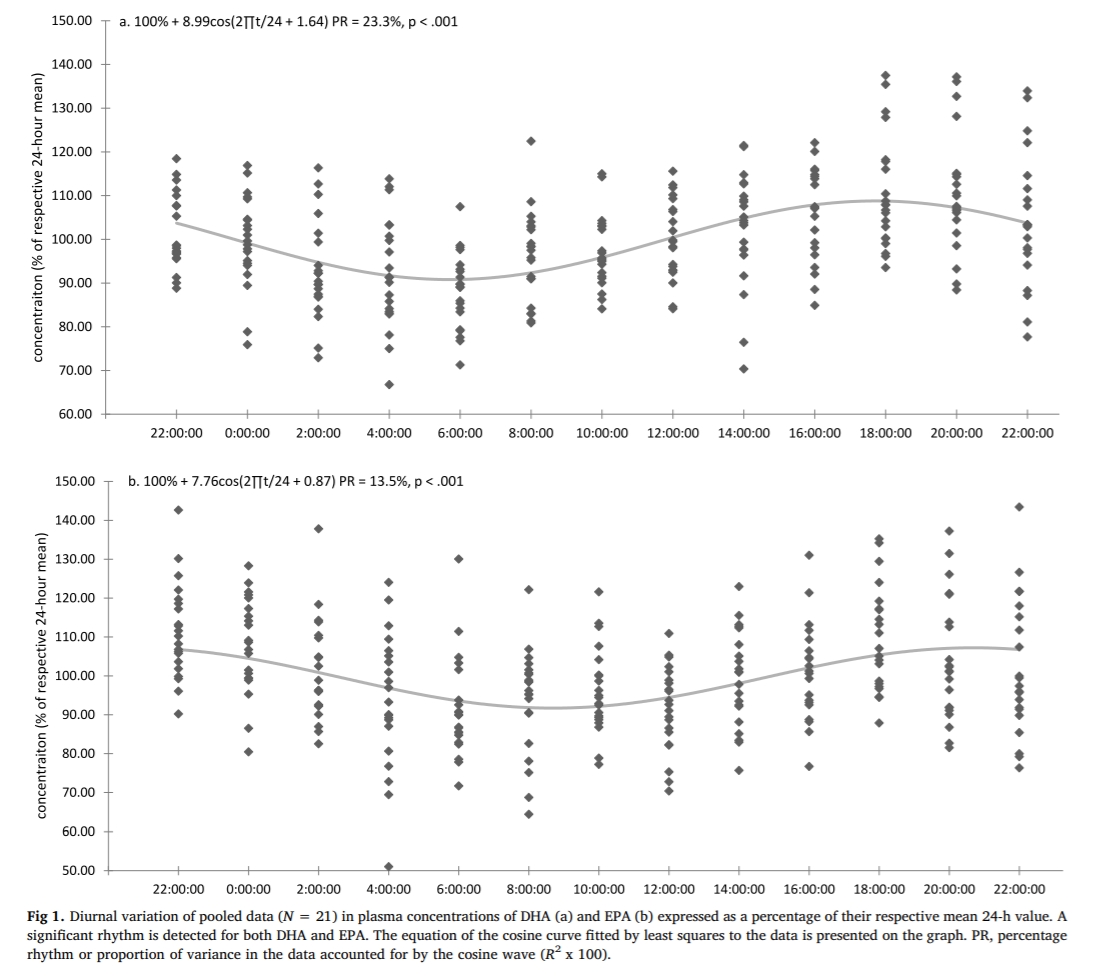Diurnal rhythm of plasma EPA and DHA in healthy adults
Philippa A. Jackson Prostaglandins, Leukotrienes and Essential Fatty Acids: March 2020 (Volume 154)
Highlights
•Knowledge of the diurnal variation in circulating omega-3 polyunsaturated fatty acids may be an important consideration for the development of dosing protocols.
•A diurnal rhythm was detected for 20 out of the 21 plasma fatty acids that were analysed.
•Concentrations of DHA and EPA decreased in the overnight period, with the nadir for each estimated to occur at 05:43 and 08:41, respectively.
•The functional relevance of night time dosing of DHA and EPA is discussed.
Abstract
Knowledge of the diurnal variation in circulating omega-3 polyunsaturated fatty acids (n-3 PUFAs) may be an important consideration for the development of dosing protocols designed to optimise tissue delivery of these fatty acids. The objective of the current study was to examine the variation in plasma concentrations of eicosapentaenoic acid (EPA; 20:5n-3) and docosahexaenoic acid (DHA; 22:6n-3) over a 24-h period in healthy adults under eating and sleeping conditions generally approximate to a free-living environment.
Twenty-one healthy participants aged 25–44 years took part in a single laboratory visit encompassing an overnight stay. EPA and DHA were measured in plasma samples collected every two hours from 22:00 until 22:00 the following day, with all meals being provided at conventional times. Cosinor analysis was used to estimate the diurnal variation in each fatty acid from pooled data across all participants. A significant diurnal variation in the pooled plasma concentrations of both fatty acids was detected.
However, evidence of distinct rhythmicity was strongest for DHA. The timing of the peak concentration of DHA was 17:43 with a corresponding nadir at 05:43. In comparison, the observed acrophase for EPA was delayed by three hours, occurring at 20:41, with a nadir at 08:41. This is the first time that the diurnal variation in these important bioactive fatty acids has been described in a sample of healthy adults following a normal pattern of eating and sleeping. In the absence of any dietary intake of EPA and DHA, circulating levels of these fatty acids fall during the overnight period and reach their lowest point in the morning. Consumption of n-3 PUFAs at night time, which counteracts this pattern, may have functional significance.














